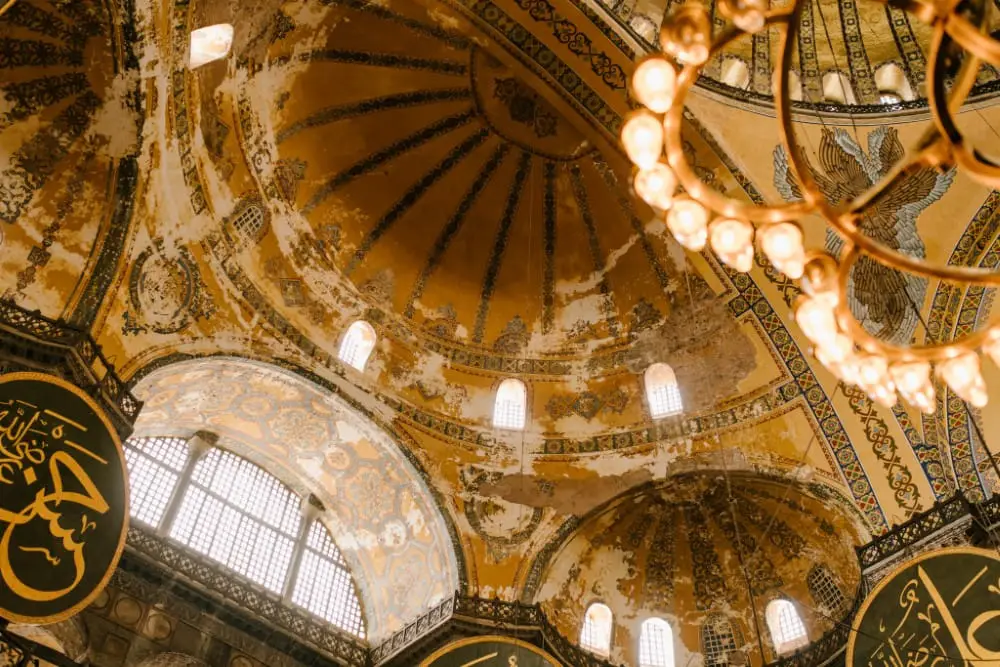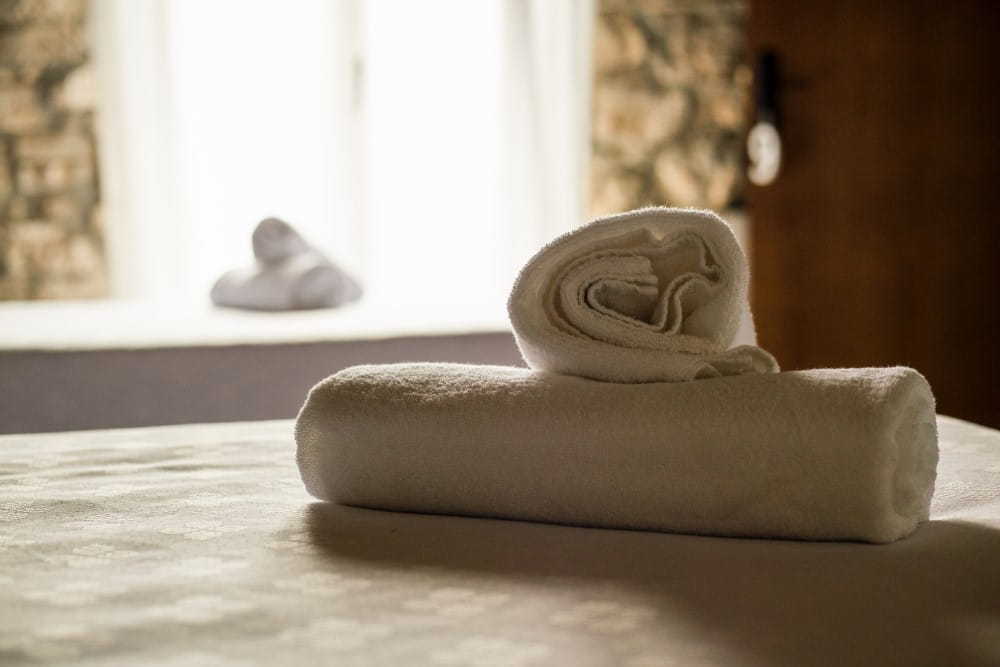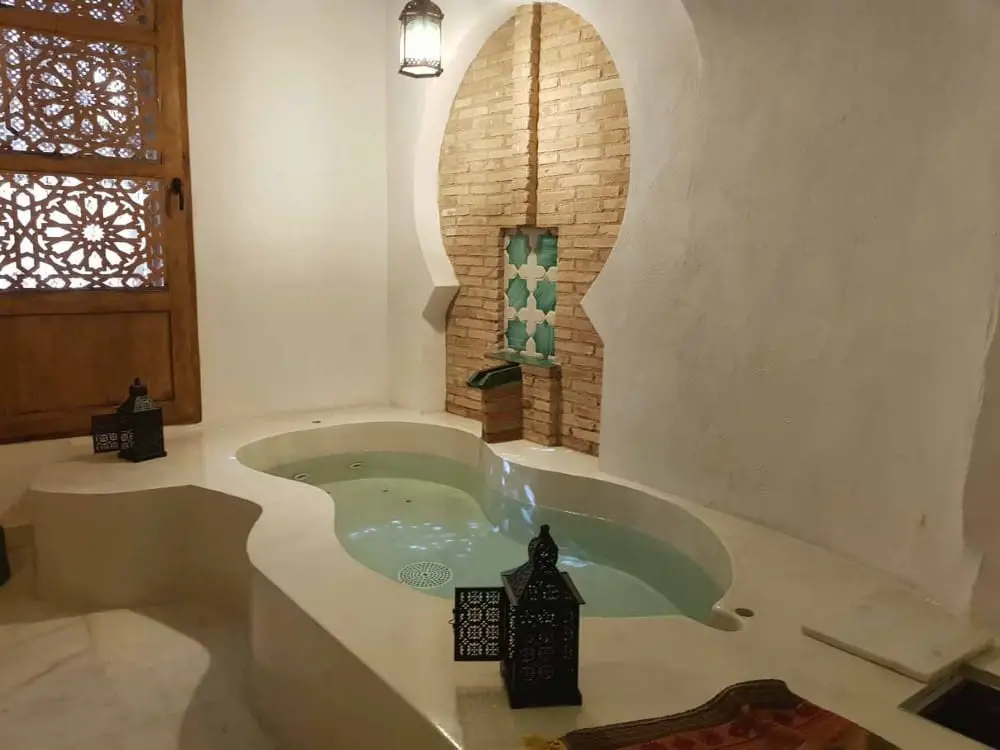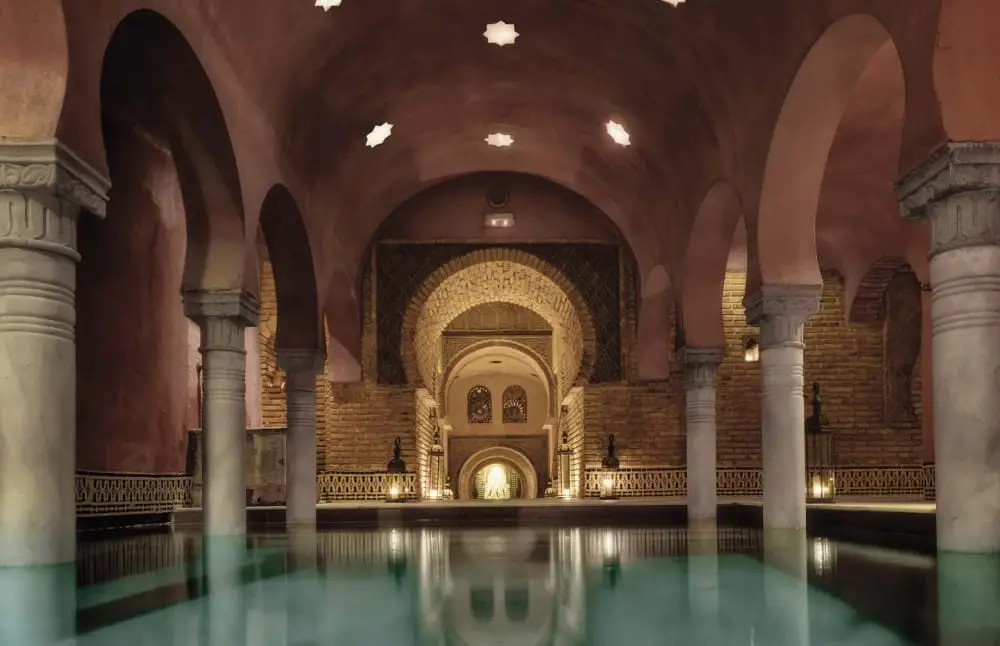
Maybe at some point, you have decided to enjoy a wonderful Arab bath, but you were not very clear about what is a hammam and the difference between Turkish baths.
Almost all cultures have made (and make) use of water not only for hygienic purposes or for nourishment, but also for social, religious, and wellness purposes. And the Muslim culture is one of those that has made the best use of the water around it.
From the use of fountains to create visual and sound effects that induce relaxation and delight, as in Andalusian architecture, to the use of water as a purifier of body and spirit.
Therefore, they took the idea of the Roman baths and adapted it, in a masterly way, to their customs and needs, thus creating the Hammans.
In this article we tell you what a hammam is and if there is any difference between these establishments, the Arab baths and the Turkish baths.
What is a hammam
The hammam is a public bath which, in Muslim culture, fulfills the function of both hygiene, rest and relaxation, as well as becoming a place for social gatherings and, in a certain way, a "political forum". Even to solve problems and close business deals.
In addition, the hammam has a very important religious dimension for Muslims, as it is the place in which to practice ritual ablutions. It is a space of purification of the body to surrender to the consequent purification of the soul.
Although it comes from the Roman thermal baths, the hammam has some particularities that make it very different from these, in addition to the bathing experience being completely different.
The most striking thing about this type of bath is that, while the concept of the Roman baths was conceived as large establishments that accommodated a large number of people, in the case of the hammam we find a large number of smaller baths, scattered throughout the city and almost always near a mosque so that they can fulfill their purifying function.
These are establishments that, at first, were reserved only for men, although women were gradually allowed to enter, at first those who were sick or had just given birth, so that they could purify themselves and, little by little, their use was normalized, either in separate facilities or, if this is not possible due to the size of the hammam, through different schedules for men and women.
It is important to bear this in mind if you decide to visit a hammam, as although many Western establishments are mixed, the same is not true of traditional hammams.
In the traditional hammam, immersion baths are not as important as in Roman baths or in today's spas.
On the contrary, the most common is that the water, which is heated by means of furnaces (wood-burning ovens), is spread over the body.
Meanwhile, the rooms are heated by a system of ducts that, through the walls and ceilings of the establishment, expels hot air that regulates the temperature of the room.
The structure of the rooms is also slightly different: when you arrive at a traditional hammam you will find a room, similar to a lobby, with storage areas for clothes, where clients undress, prepare for the bath, rest, and wait.
Then we find a cold room, the smallest one, designed for clients to acclimatize to the environment and temperature.
Next, a warm room, where you stay longer and where, while waiting to move to the warm room, much of the social and business interaction takes place.
And, finally, a hot room, with cold water basins that are used to alternate with the steam baths and to refresh oneself.

Are you looking for a spa or health spa to relax in?
Are you looking for a spa or health spa to relax in?
CONSULT OUR SEARCH ENGINE TO FIND THE ESTABLISHMENT THAT FITS YOU BEST!

Difference between hammam, Arab bath, and Turkish bath
Although these three terms are used as synonyms, there is actually a slight difference between them, especially with the Turkish bath.
What does the word "Hammam" mean? Hammam is a word that currently gives name to the Arab baths, but its etymology comes from the Arabic "that expels heat", so we could come to consider hammam as synonymous with Arab baths.
The Turkish bath, on the other hand, refers more to the treatment: it is a bath that, unlike the sauna, is more humid.
How is the bathing process inside a hammam
In a hammam, as you have already seen, you are going to find three interconnected rooms: an atrium, which functions as a warm changing room, in which to undress and put on the pestemal or futa, a thin cloth used to cover the body, as well as nalin, a pair of wooden slippers to move around the establishment.
From there you move on to the hot room, where you'll find "the belly stone", or what amounts to the same thing: a raised marble platform on which you'll lie down to sweat, open your pores, and prepare for the cleansing ritual.
After a few minutes, you will be washed and scrubbed vigorously with a natural soap made with olive and eucalyptus paste and a rough glove, in order to achieve a deep exfoliation.
And finally, the treatment ends in the cold room, where you can recline, relax and have a drink to hydrate.

What is the origin of the hammam?
The hammam arises in the region of Syria, based on the idea of the Roman baths, and from there it spreads during the period of expansion of Islam, to such an extent that in the Caliphate Cordoba, there were more than 600 public baths
However, the Arab baths of Al Andalus that have reached our days in a better state of preservation are the Baños del Almirante, built-in 1313 in Valencia, the Baños de El Bañuelo, in Granada, dating from the 11th century, and the Baños Árabes de Jaén, also from the 11th century, which is located in the basements of the palace of Villardompardo, in the capital of Jaén.
Hammams in Spain
Although the experience is not the same as the one you can live in a traditional hammam in Marrakech or Istanbul, in Spain we also have some hammams that are worth knowing
These are establishments that revise the concept and bring the experience closer, adapting it to our customs and tastes.
In any case, you can't miss a good bath in a hammam if you're a fan of spa treatments.
In our search engine, you can find Turkish baths in Granada, Valencia, or Melilla, for example, with which you can "teleport" to the Al Andalus of the eleventh century and come back feeling in the same glory.
And if, in addition, you dare to travel and visit a traditional hammam, we will be delighted to hear about your experience.

Are you looking for a spa or health spa to relax in?
Are you looking for a spa or health spa to relax in?
CONSULT OUR SEARCH ENGINE TO FIND THE ESTABLISHMENT THAT FITS YOU BEST!

Al-Haram Hammam Baños Árabes Granada
Hammam, without its own accommodation, a few minutes from the Cathedral of Granada. Tour of its hot, warm and cold baths, and steam bath. Various massages
Hammam Al Ándalus Baños Árabes Palma
Traditional Arab baths in the center of Palma, in Calle Costa y Llobera. Water facilities at different temperatures, thermal baths and massage rooms.






